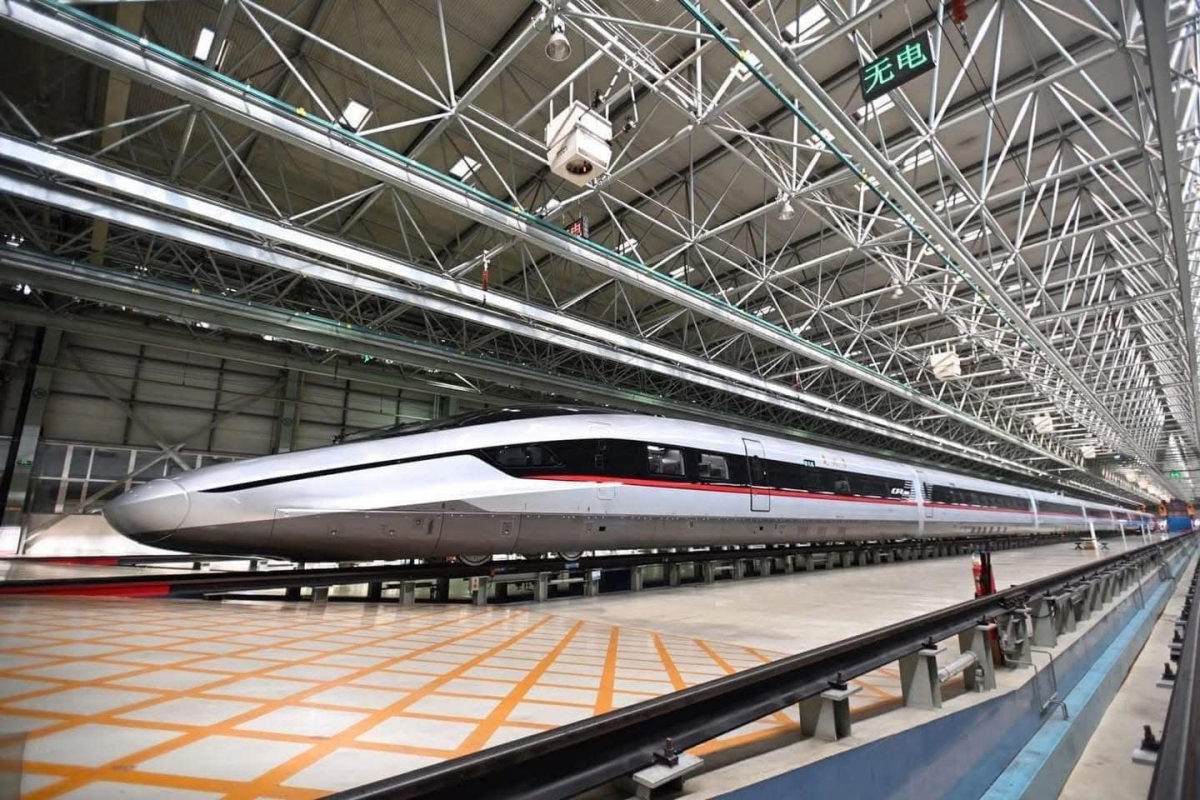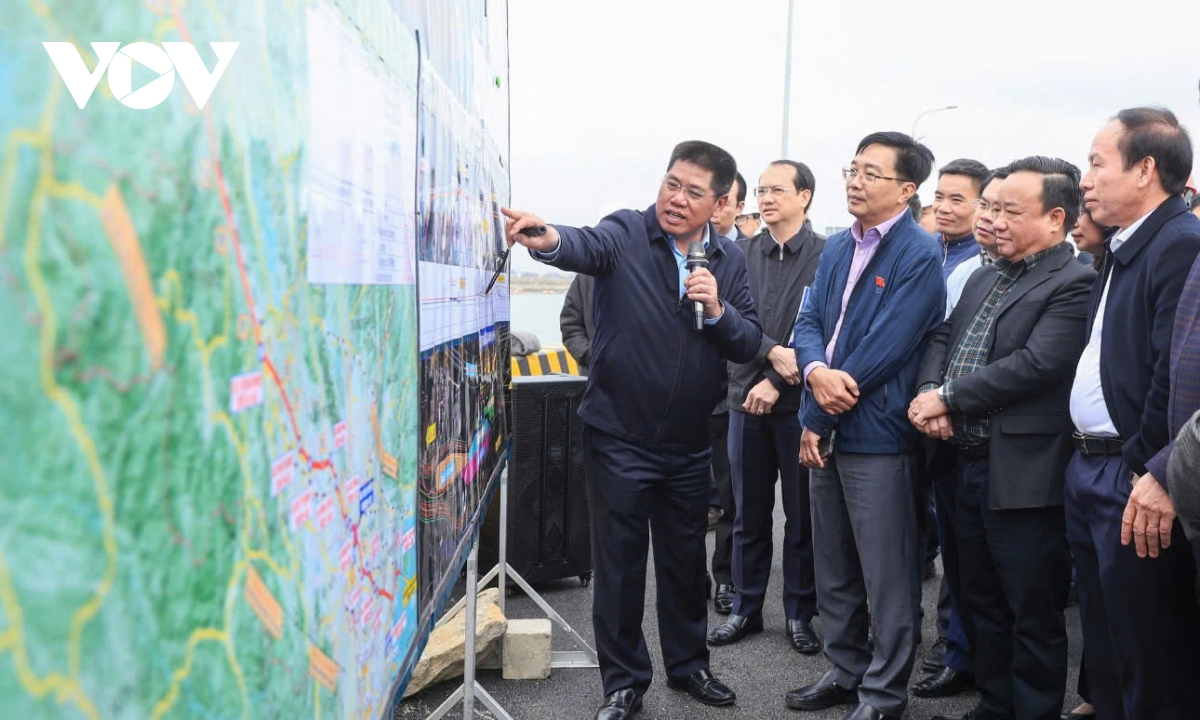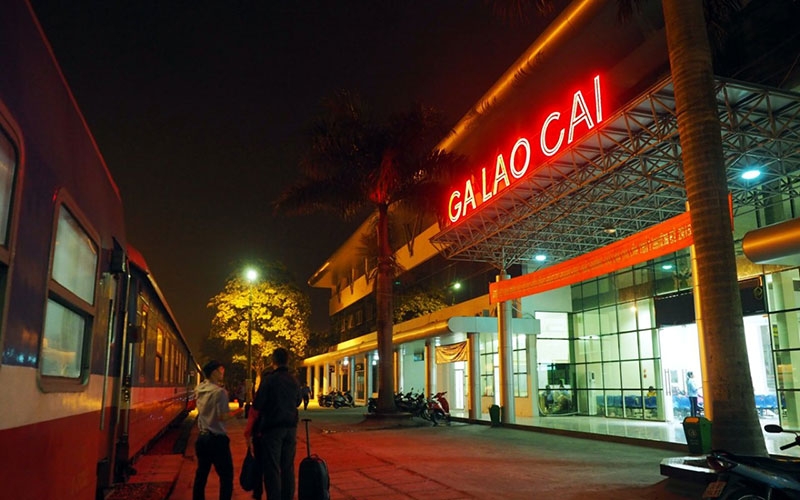On the basis of the agreement of the Government members, Minister of Transport Tran Hong Minh, authorized by the Prime Minister, has just signed a report to the Government to request the National Assembly to approve the investment policy of the Lao Cai – Hanoi – Hai Phong railway project.
This afternoon (10/2), the Standing Committee of the National Assembly gave opinions on the investment policy of the Lao Cai – Hanoi – Hai Phong railway project to submit to the National Assembly for consideration and decision at the 9th Extraordinary Session.
The railway connecting to China is expected to run at a maximum speed of 120km/h. Illustrative photo.
According to the content of the report, this railway line is 403.1km long, including the main line of 388km and two branch lines of 15km. The starting point is at the location of the rail connection across the border between Lao Cai New Station and Hekou North Station (China), in the territory of Lao Cai city; the end point is at Lach Huyen wharf area, in the territory of Hai Phong city of Vietnam.
In the first phase, the route was built as a single road, with a gauge of 1,435mm, transporting passengers and goods together. Passenger trains and freight trains choose train technology using concentrated power, operating at a speed of 160 km/h-120km/h depending on the segment.
The whole route has 18 stations, including three stations for Lao Cai, Yen Thuong, Nam Hai Phong and 15 mixed stations. (Train stations are large stations that are usually located in railway hubs).
In addition, to carry out technical operations for train operation, 14 technical operation stations are arranged. The Ministry of Transport said that the existing railway line will transport domestic passengers, short-distance tourism and transport existing goods connected to the new railway line.
The total investment of the project is 203,231 billion VND (about 8,396 billion USD), from public investment capital. Currently, the project has balanced 128 billion VND, the remaining amount the Government plans to propose to the National Assembly to balance in the medium-term public investment plan in the next period.
Proposing a series of specific policies and mechanisms for implementation
In order to quickly implement project investment, the Government proposes 19 specific policies and mechanisms. In particular, there are groups of mechanisms and policies approved by the National Assembly for the North-South high-speed railway project.
The National Assembly’s delegation surveyed the Lao Cai – Hanoi – Hai Phong railway project.
In particular, the policy allows the Prime Minister to decide to issue Government bonds in case the annual state budget estimate does not meet the schedule. The Government can also mobilize ODA and foreign concessional loans to implement projects and do not have to make proposals for projects using ODA capital.
The Ministry of Transport also proposes to add 4 groups of policies under the jurisdiction of the National Assembly.
Specifically, for the group of policies on adjustment of relevant plannings, the Ministry of Transport proposes the competent authority to consider and allow not to carry out the procedures for adjusting the planning in case the project implementation is different from the relevant plans approved by the competent authority.
The adjustments according to the project will be updated in the planning during the periodic review and implementation.
Ensure the implementation progress, the mechanism to allow the investor to be deployed and at the same time prepare a pre-feasibility study report, feasibility study report, technical design, bidding documents, etc. in case of necessity is also recommended.
The Ministry of Transport proposes the competent authorities to consider and allow the investor to be appointed to bid for international contractors with experience in coordinating with domestic consultants to prepare feasibility study reports, post-basic design, supervision, construction contractors, etc equipment supply contractors…
The starting point is at the location of the rail connection across the border between Lao Cai New Station and Hekou Bac Station (China), in the territory of Lao Cai city of Vietnam.
For mechanisms and policies under the jurisdiction of the Government, the Ministry of Transport proposes 6 policies.
In particular, the Ministry proposes that Vietnam Railways Corporation be allowed to receive the transfer of technology for the production of vehicles and equipment for the project; to allow the increase of the corporation’s charter capital from the budget to carry out the transfer of technology and production of vehicles for the project.
Investors of investment projects in the national railway system with a speed of less than 200km/h, urban railways must order the Vietnam Railways Corporation for all vehicles used for the project (except for projects with international commitments) is also one of the notable specific mechanisms proposed by the Ministry of Transport.
In addition, the Government proposes to allow the project not to carry out the appraisal of the ability to balance capital in accordance with the Law on Public Investment, provinces can use their budgets to carry out site clearance to create a land fund for development, policies on the development of the railway industry…
After being approved by the National Assembly, the Government will immediately carry out site clearance in the middle of this year, start the project at the end of 2025 and basically complete construction in 2030.
The project dossier of the modern railway connecting China was made by the Ministry of Transport based on the planning dossier of the standard gauge railway route Lao Cai – Hanoi – Hai Phong which was carried out by China Railway Design and Survey Institute No. 5 Group Co., Ltd.
In the process of receiving, the Ministry of Transport supplemented the study of the section from Hai Phong to Quang Ninh as a basis for approving the detailed planning of the Lao Cai – Hanoi – Hai Phong – Quang Ninh railway.
However, according to a recent proposal, the Hai Phong – Quang Ninh section will be studied and implemented after 2030 along with the investment roadmap of the Nam Dinh – Thai Binh – Hai Phong – Quang Ninh coastal railway.



